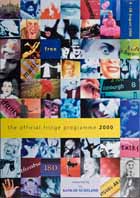Edinburgh Festival Fringe
This collection includes brochures, correspondence, leaflets, presscuttings and programmes.
The Fringe story began in 1947, when the Edinburgh International Festival was launched. It was seen as a post-war initiative to re-unite Europe through culture. Eight theatre groups - mostly local amateur productions - turned up uninvited to add their artistic efforts to the first Edinburgh Festival. They called themselves the Festival Adjuncts. The following year the term 'the Fringe' was coined by playwright, Robert Kemp, in a preview article for the Edinburgh Evening News entitled "More that is Fresh in Drama" on 14 August, 1948.
In the early days during the late 40s and early 50s, the various Fringe groups, now attracting an increasing number of student theatre companies, from Oxford, Cambridge and London put on their own shows independently, in small performance spaces, including church halls, local community centres, the YMCA, and University buildings. By 1954 an enterprising printer suggested Fringe groups advertise in the first fringe programme. The same year representatives of Fringe groups met together at a conference with the aim of setting up a proper committee so that they could work together.
By 1954 a box office had been set up at the University`s Old College. By 1959 the Fringe Society had been established to assist visiting companies with venues, accommodation, publicity, ticket sales, and to compile a fully comprehensive programme of events. In 1960, a quartet of young performers, Peter Cook, Dudley Moore, Alan Bennett and Jonathan Miller were invited to appear on the official festival, in their show, Beyond the Fringe .
How to find material relating to the Edinburgh Festival Fringe
- Browse through a list of documents or events associated with the Edinburgh Festival Fringe or use the Name Search option on the Scottish Theatre Archive Search
See also
- The Edinburgh Festival Fringe: official website of the Edinburgh Festival Fringe
